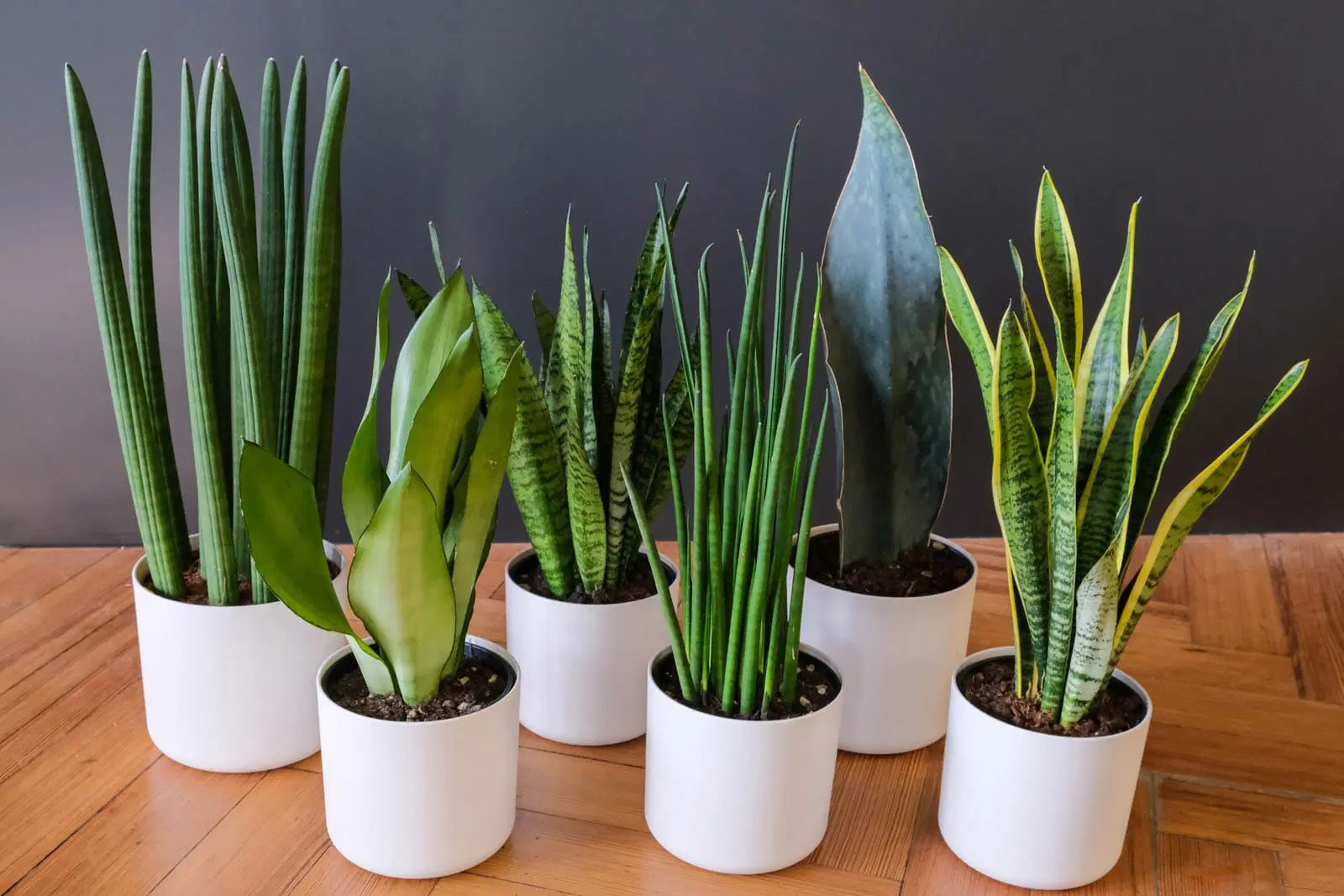Snake plants (Sansevieria trifasciata), also known as mother-in-law's tongue, are popular for their hardy nature and air-purifying abilities. Despite being low-maintenance, they can still encounter problems that affect their health and appearance.
In this article, we’ll discuss some common issues with snake plants and how to address them to keep your plant thriving.
1. Yellowing Leaves

Problem: Yellowing leaves are a common issue that can be caused by several factors, including overwatering, poor lighting, or nutrient deficiencies.
Solution:
- Overwatering: Snake plants are drought-tolerant and prefer their soil to dry out between waterings. To fix this, reduce watering frequency. Ensure the pot has good drainage to prevent water from sitting at the bottom.
- Lighting: While snake plants can tolerate low light, they thrive in bright, indirect light. Move your plant to a brighter location but avoid direct sunlight, which can scorch the leaves.
- Nutrient Deficiency: If the plant is not getting enough nutrients, consider using a balanced, all-purpose houseplant fertilizer once a month during the growing season (spring and summer).
2. Root Rot

Problem: Root rot is often caused by overwatering and poor drainage, leading to soggy soil and decaying roots.
Solution:
- Watering: Allow the soil to dry out completely between waterings. Water the plant thoroughly but infrequently.
- Drainage: Ensure the pot has drainage holes and use well-draining soil, such as a cactus or succulent mix. You can also add perlite or sand to the soil to improve drainage.
- Treatment: If you suspect root rot, remove the plant from its pot, trim away the affected roots, and repot it in fresh, dry soil.
Also Read- Best Locations For Snake Plants In Your Home
3. Brown Tips

Problem: Brown tips on snake plant leaves can result from inconsistent watering, low humidity, or salt buildup in the soil.
Solution:
- Watering: Maintain a consistent watering schedule, ensuring the soil dries out between waterings but does not remain dry for too long.
- Humidity: Although snake plants tolerate dry air, extremely low humidity can cause brown tips. Increase humidity by misting the leaves occasionally or using a humidifier.
- Salt Buildup: Salts can accumulate from tap water or over-fertilizing. Flush the soil by running water through the pot for a few minutes to wash out excess salts.
4. Drooping Leaves

Problem: Drooping leaves are often a sign of overwatering, underwatering, or insufficient light.
Solution:
- Overwatering: Check the soil moisture and reduce watering if it feels consistently wet. Ensure proper drainage.
- Underwatering: If the soil is too dry, water the plant thoroughly. Make sure to follow a regular watering schedule.
- Lighting: Ensure the plant is getting enough light. Move it to a brighter spot if it’s in low light.
5. Pests

Problem: Snake plants are relatively resistant to pests, but they can occasionally suffer from infestations of spider mites, mealybugs, or aphids.
Solution:
- Spider Mites: These tiny pests cause stippling and webbing on leaves. Wipe the leaves with a damp cloth and use insecticidal soap or neem oil to treat the plant.
- Mealybugs: These pests appear as white, cottony masses. Remove them with a cotton swab dipped in rubbing alcohol and treat the plant with insecticidal soap.
- Aphids: These small, green insects can be sprayed off with water. Use insecticidal soap for more severe infestations.
6. Leaf Curling

Problem: Leaf curling can be caused by improper watering, temperature stress, or pests.
Solution:
- Watering: Ensure the plant is watered correctly. Overwatering or underwatering can cause leaf curling.
- Temperature: Keep the plant in a stable environment, avoiding cold drafts or sudden temperature changes.
- Pests: Inspect the plant for signs of pests and treat as necessary.
Preventative Measures
Taking a few preventative measures can help keep your snake plant healthy and free from common problems:
- Proper Watering: Water sparingly and ensure good drainage.
- Lighting: Provide bright, indirect light for optimal growth.
- Regular Inspections: Check your plant regularly for signs of pests or disease.
- Clean Leaves: Wipe the leaves with a damp cloth to remove dust and pests.
- Balanced Fertilization: Fertilize with a balanced houseplant fertilizer during the growing season.
Also Read- Creating A Snake Plant Care Routine: Tips For Busy People
Conclusion
Snake plants are resilient and easy to care for, but they can still encounter problems. By understanding the common issues and knowing how to address them, you can ensure your indoor plants like snake plant remains healthy and vibrant. Remember, the key to a thriving snake plant is proper watering, adequate light, and regular maintenance. With these tips, you'll be well on your way to enjoying a beautiful and trouble-free snake plant in your home.













Leave a comment
This site is protected by hCaptcha and the hCaptcha Privacy Policy and Terms of Service apply.